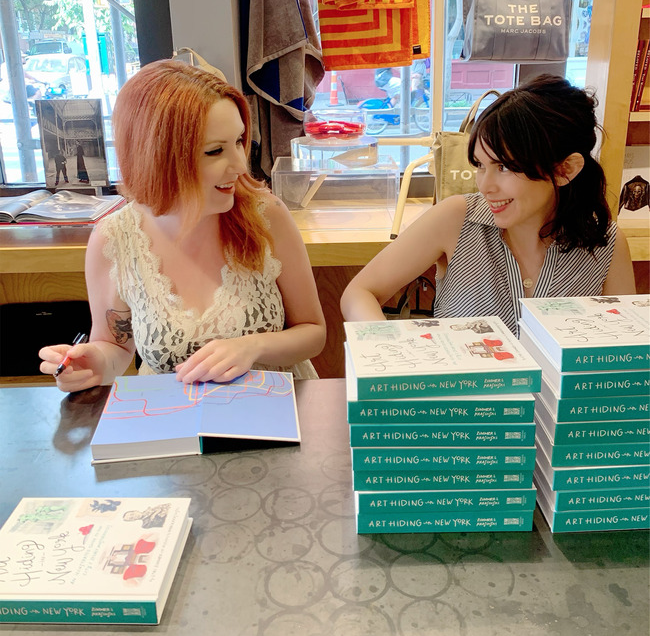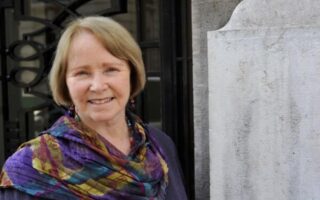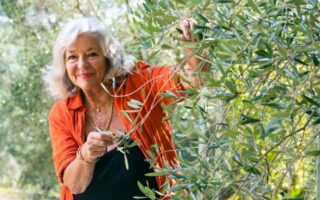Interview with Author Lori Zimmer
- SUBSCRIBE
- ALREADY SUBSCRIBED?
BECOME A BONJOUR PARIS MEMBER
Gain full access to our collection of over 5,000 articles and bring the City of Light into your life. Just 80 USD per year.
Find out why you should become a member here.
Sign in
Fill in your credentials below.
I’m Not Your Muse: Uncovering the Overshadowed Brilliance of Women Artists and Visionaries is Lori Zimmer’s fifth book, and her third book in collaboration with illustrator Maria Krasinski. Zimmer, a longtime New Yorker, is passionate about travel, food, and artists’ rights. She recently took the time to answer Janet Hulstrand’s questions about their latest book for Bonjour Paris.
This is a beautiful book, with a really intriguing title. Can you tell me what made you want to write this book? Was there a particular moment of epiphany, or maybe a particular woman’s story that inspired you to do it?
As the partner of an artist, this topic has always been on my mind. Before we got together 11 years ago, I was a professional writer and independent curator in the New York art world. Over the past 15 years, I have written thousands of articles about art, artists, sustainable design, and architecture, as well as dozens of exhibition catalog essays, interviews, press releases, and forewords. I’ve curated around 40 exhibitions in New York, the US, and Europe. I even co-curated an exhibition at the White House in 2015. I’m Not Your Muse is my fifth published book, the third with agency representation and a big five publisher. I have a master’s degree. I’ve paid my own way in New York City for 20 years. I am 45 years old, I’ve done things! Yet, despite all of this, most people I encounter in business assume that I am my partner’s assistant, and nothing more. It is beyond maddening. It is true, I have posed for his paintings. I’ve written essays for his books. I’ve helped with his exhibitions, the same exact way he has helped me with each and every one of my projects. We are a team, much like many of the women in the book.
When I realized my personal experiences today were not unlike those of many women over a century ago, I knew I had to write this book. I am a researcher. I absolutely love to get lost in the histories of great and creative people of the past. It is my happy place. I keep lists of research I find intriguing, either for future projects, or just for fun (I am a nerd). When I was researching my past two books, Art Hiding in Paris and Art Hiding in New York, I kept coming across stories of incredible women I had heard of, but didn’t know enough about. I began to collect their names in one of my lists. When that list passed 70, I realized that this was my next book. Luckily Maria Krasinski, my illustrator partner in crime, and my publisher, Running Press, agreed.
You feature 31 women in this book, all of whom are very impressive, and interesting. How did you choose the women you decided to feature? (I’m assuming here that there are more than 31 stories of women artists whose brilliance has been overlooked…)
OMG It was so hard to decide! But really, what it ended up coming down to is the availability of information for the most part. Writing about multiple subjects is very different than writing a singular biography. For a singular biography I’d go to the ends of the earth for research, but unfortunately, I did not have the time to do that for 31 women. (I have bills to pay!)
My original list had over 100 women on it, but it began to dwindle as I started my deeper research – beyond just perusing articles on the internet. I was lucky to find biographies for many of the women, though most were out of print, out of date, or just very, very dry. I hit up my usual places – rare book rooms, research libraries, museum and newspaper archives – and those women that had enough information for a couple-page narrative were moved to the top of the list.
My publisher suggested that 25 or 30 subjects would make for a readable book. But I landed on 31 as a tribute to Peggy Guggenheim’s Exhibition by 31 Women, held at her New York gallery, Art of This Century, in 1943. I realize that there are countless women who deserve the spotlight. I tried to make the most well-rounded grouping that I could with the time I had. In my heart of hearts, I hope that the short vignettes in this book will inspire other writers to do deep-dives into some of these stories, and give these women the full, contemporary biographies they deserve.
What is one of the most interesting – or maybe the most surprising thing – you learned in the process of researching this book?
I recently wrote an essay on my Substack about Louise Blanchard Bethune, who became the first female architect in the United States in 1881. Bethune operated out of Buffalo, New York, my hometown. She designed the Hotel Lafayette in downtown Buffalo, a building I have been familiar with and have visited since I was a teenager in the mid-1990s. And yet I had no idea who she even was until I began to research this book. No teacher ever told me that the country’s very first female architect was homegrown. No one thought to excite the little girls and boys of Buffalo by giving them a local hero. It really, really shocked me.
I was also stunned by just how many of these stories there really are – women being erased by the writers of history, or their partners, or their bosses. It seemed like the same old story over and over. At times, it was really depressing. Gender should not be a factor in celebrating human greatness. We should all be proud and excited.
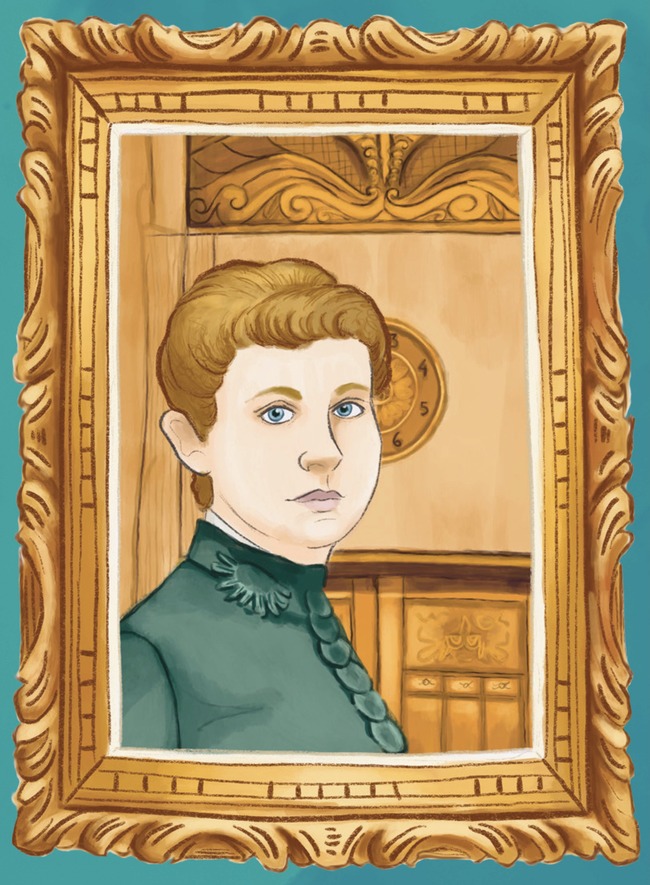
Illustration of Louise Blanchard Bethune from “I’m Not Your Muse”
The amount of research you had to do to create this book is impressive. How long was the process of creating it?
I was casually researching this book for a couple years, with no idea of what would come of my findings. Once I put the idea into a book proposal, I spent the greater part of a year, or a year and a half, focusing almost full time on the research in libraries, archives, and museums in New York and Paris, as well as with some really fun interviews I did with experts and descendants of some of the women. That was really special.
I’m sort of never not researching. (Again, I’m a nerd.)
Your book is beautifully illustrated. How did you and Maria Krasinski work together to create it?
Maria and I met in the 4th grade in the Gifted and Talented program in our little suburb, 30-something years ago. We reconnected in our 20s, and quickly learned that we had grown up to love many of the same things – travel, history, art, architecture, and food. (In my opinion, the things that make life worth living!) In 2017, I visited her in Tbilisi, where she was working with the Peace Corps, and she showed me some drawings she had made of the crumbling Art Nouveau architecture around the city. The drawings almost immediately inspired me, and the idea for our first book together, Art Hiding in New York, was born right there. I researched and wrote, and she made illustrations for the entire book without an agent or publisher, or really any idea what we would do with it. We figured worst-case scenario, we would self-publish it, at least for ourselves. Our agent Lindsay Edgecombe got a hold of it and loved it immediately, and she sold it within a month.
Maria lives in Paris now, but we talk every day, and see each other many times a year, so our collaboration is ongoing. She is probably the most impressive person I have ever met. There is nothing she can’t do. She was a contestant on Jeopardy, is an extremely gifted chef and artist, knows a handful of languages, and is the boss at News Decoder, a nonprofit platform that guides students in producing and publishing news articles around the world. She could have written this book had she had the time. I just watched her run her first marathon in Paris over the weekend. She is actually the 32nd inspiring woman in this book!
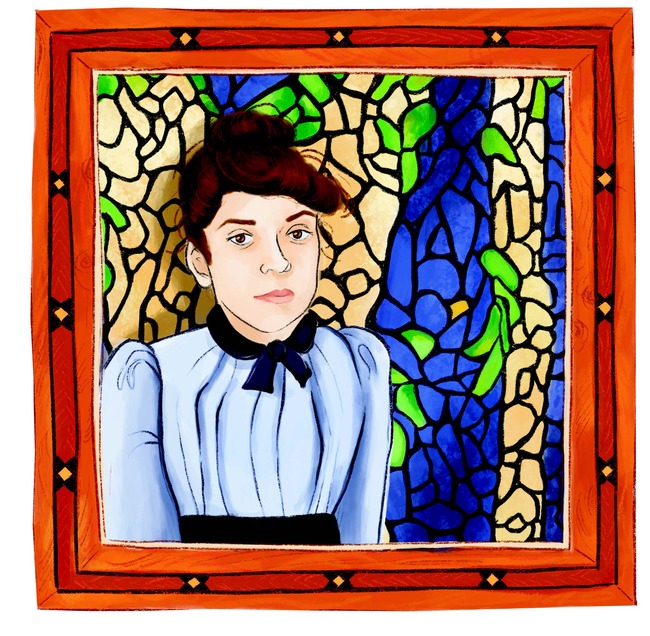
Illustration of Clara Driscoll from “I’m Not Your Muse”
Do you have any favorites among these 31 women?
Oh, this question! It is so hard for me to decide, I feel very protective of every woman I have written about. I love Eileen Gray; she taught herself architecture (?!), and was such an incredible designer. I immediately bought a low-end version of her E-1027 table as soon as I learned she had designed it. Belle da Costa Greene, the visionary of the Morgan Library in New York, has my heart for bringing together an important collection of books, illuminated manuscripts, master drawings, and art works for J.P. Morgan, which she then insisted be available to scholars in the general public. I also love Leonora Carrington, Kati Horna, and Remedios Varo for varying reasons. They were all incredible artists, continuing the Surrealist Movement in Mexico City after fleeing Europe in WWII. But what really gets me about them is their deep support of one another, which transcended friendship. It went into their art practice, their family life, their everything. They were there for one another in every aspect, and they flourished because of it. Imagine if we all had that kind of support. How great would we all be?
I love the mini-book and set of cards that provide another option for people who want to learn about these women. I can imagine these cards being used, for example, by teachers as a great tool for classroom activities – say during International Women’s Month – or, really anytime, why not?
The cards are something entirely new to me too, but I love them! The format is similar to tarot; my publisher has a branch called RP Mystical which produces a bunch of interesting and thematic decks by authors with different specialties. When they offered the option to me, I felt that doing a tarot deck didn’t feel right. I wanted to root these women in history, rather than mysticism, not that there is anything wrong with mysticism; it just isn’t “me.” We decided to call them inspiration cards. Thus far, people have sent me pics of the cards framed, favorites tucked onto mirrors, used in collages, carried in pockets, and as you said, used in classrooms. The bite-sized biographies are meant to start a conversation. Plus, I got to write about nine extra women that didn’t make it into the book, fun! I personally have a little display of four cards framed that I switch out every so often.
What would you like women – and girls – to gain from reading this book? How about men, and boys? What would you like them to learn from it?
Thank you for including men and boys in your question. I have been overjoyed with friends telling me that they plan to buy this book for all of the women in their lives. It is so nice to know that friends value something you’ve done. But while I am appreciative, I question, why not the men? History is history. What does gender have to do with a great painting, film, or building? I want everyone who reads this to learn that women have always done great things despite the limitations that societies put on them, and that we always will. We’re doing this for everyone.
What’s next for you? What are you working on now?
The world is a very different place from when I started writing this book. To refer to your earlier question, I suppose that has been the most shocking thing about writing and researching this book. I thought it would be a celebration, but I have been met with some hesitance from reviewers to write about it, saying it is “kind of controversial.” I personally do not think it is either controversial or provocative. It is simply history. So I am continuing to spread the message behind I’m Not Your Muse on my Substack, Still Not Your Muse, while I also work on my first novel. It combines some of my extensive research from I’m Not Your Muse and Art Hiding in Paris, with another love of mine – science fiction (namely, time travel). It follows two characters in two different timelines: Sophie, a 40-something woman in modern-day New York, and Evelyn, a Surrealist artist in interwar Paris. I’ve been researching for historical accuracy in my free time for the better part of a year, and have been writing for the past couple of months. Though I have a long way to go, it is always great to try new things.
Purchase a copy for yourself at your favorite independent bookstore, like the Red Wheelbarrow or Shakespeare & Company in Paris, or via Bookshop.org.
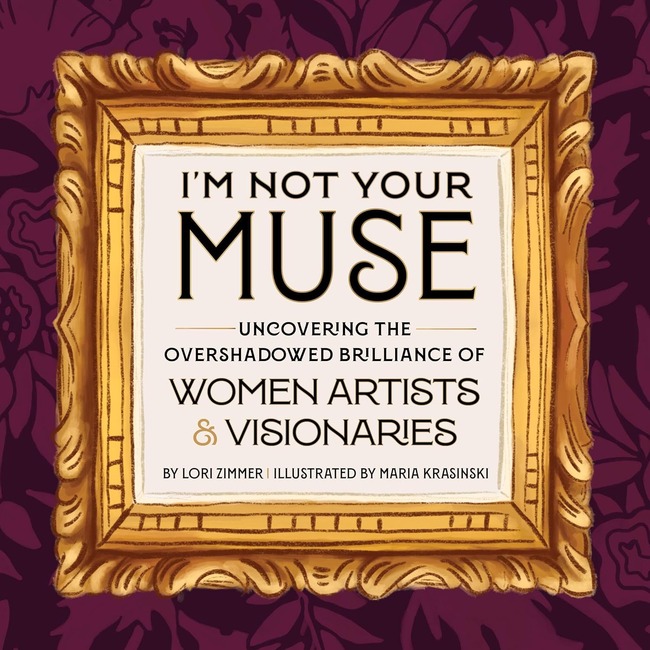
Not Your Muse_cover
Lead photo credit : Author Lori Zimmer and illustrator Maria Krasinski. Photo: Greg Mania
